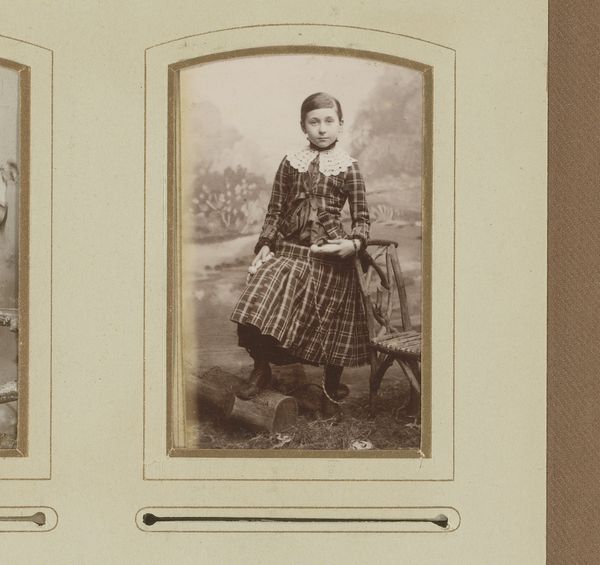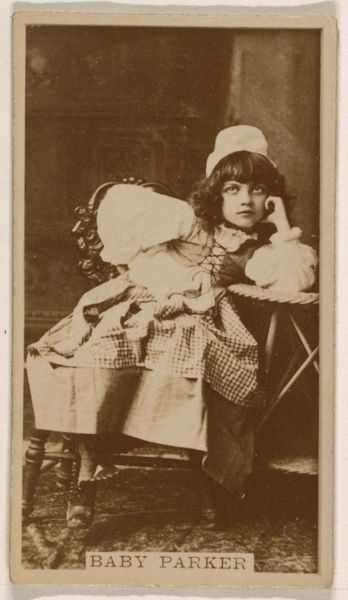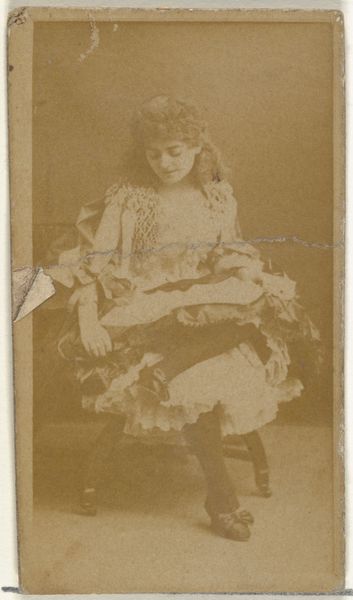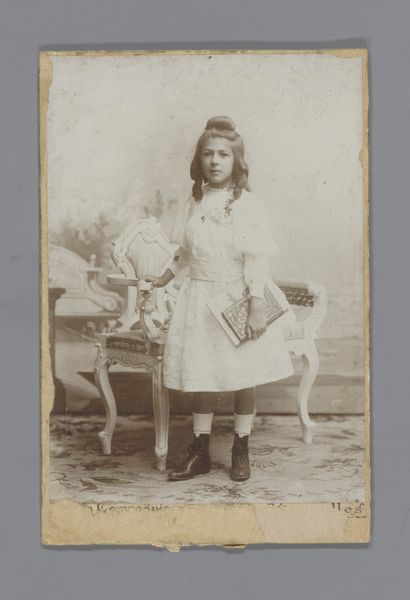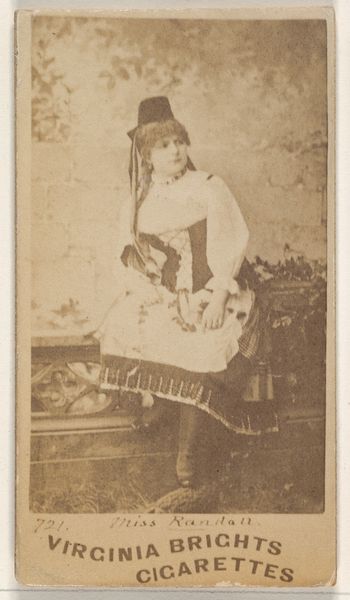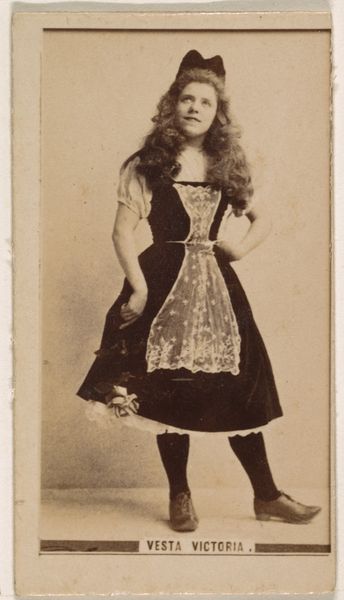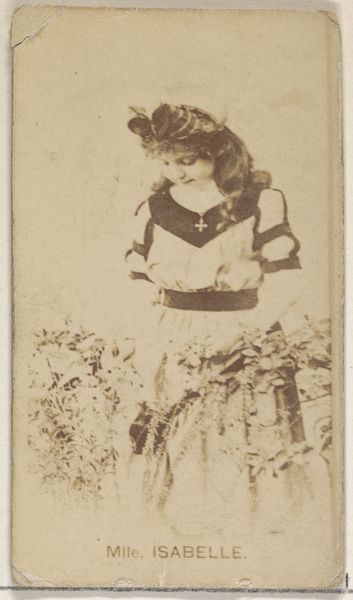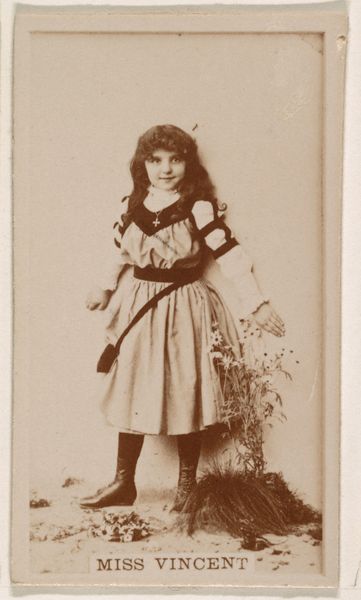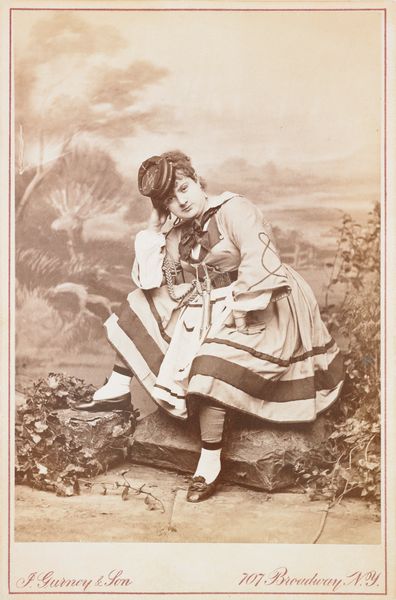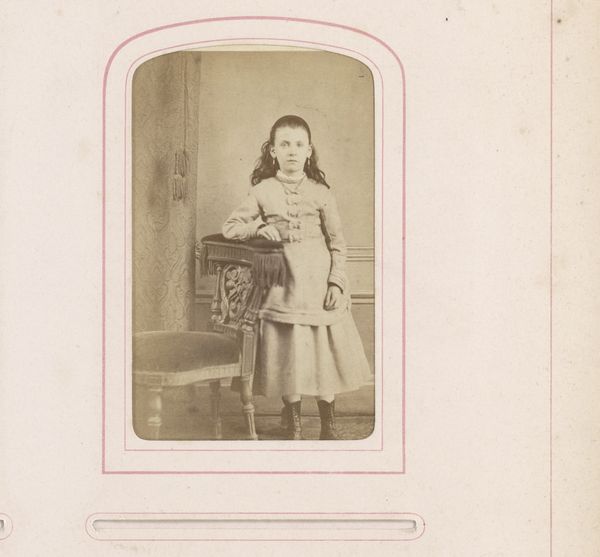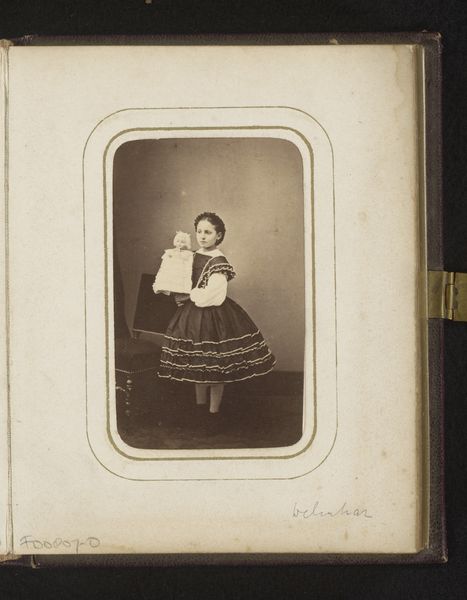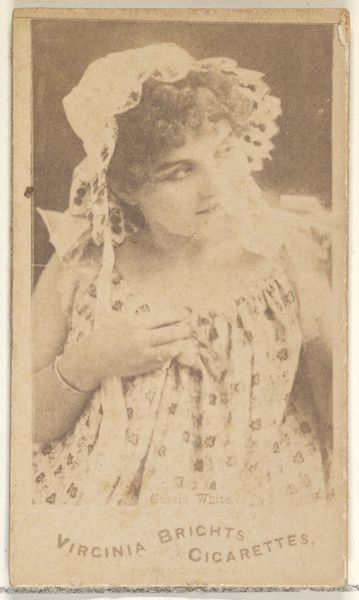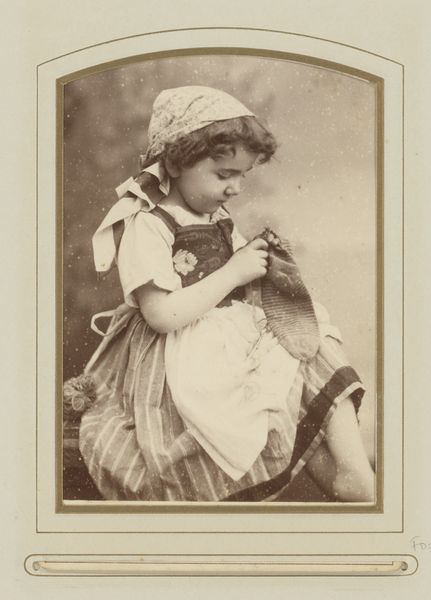
daguerreotype, photography
portrait
daguerreotype
photography
united-states
portrait drawing
academic-art
Dimensions: 3 1/4 x 5 13/16 in. (8.26 x 14.76 cm) (image)3 7/16 x 6 7/8 in. (8.73 x 17.46 cm) (mount)
Copyright: Public Domain
This stereograph of Lotta Crabtree, the famous 19th-century actress, was produced by Jeremiah Gurney and Son in New York. During this time, when photography was becoming increasingly accessible, Gurney's studio was renowned for portraiture, capturing images of prominent figures like Crabtree. Crabtree, a figure of immense cultural relevance, gained fame as a child performer during the California Gold Rush and became known for her energetic performances that challenged the conventions of femininity. In this image, Crabtree is in costume, embodying the vivacious spirit of the era's theatrical innovation. Her attire, while theatrical, also hints at the blurring of gender roles on stage, typical for the time. This stereograph not only captures the likeness of a celebrated performer but also serves as a window into the cultural landscape of the time, reflecting evolving attitudes toward women and performance. It leaves me wondering what it must have felt like to witness her performances, to be swept up in the energy of her boundary-breaking performances.
Comments
These photographs are examples of a stereograph created by Jeremiah Gurney. A stereograph is made up of two images next to each other on a page. Just like humans have two eyes, a stereoscopic camera has two lenses. The camera makes two pictures that look similar, but are taken from slightly different perspectives. Then, the pictures are placed into a stereoscope viewer (see an example displayed in the case), and the image that the eyes see is three-dimensional. This feature made them popular, although they were more expensive to purchase.
Join the conversation
Join millions of artists and users on Artera today and experience the ultimate creative platform.
